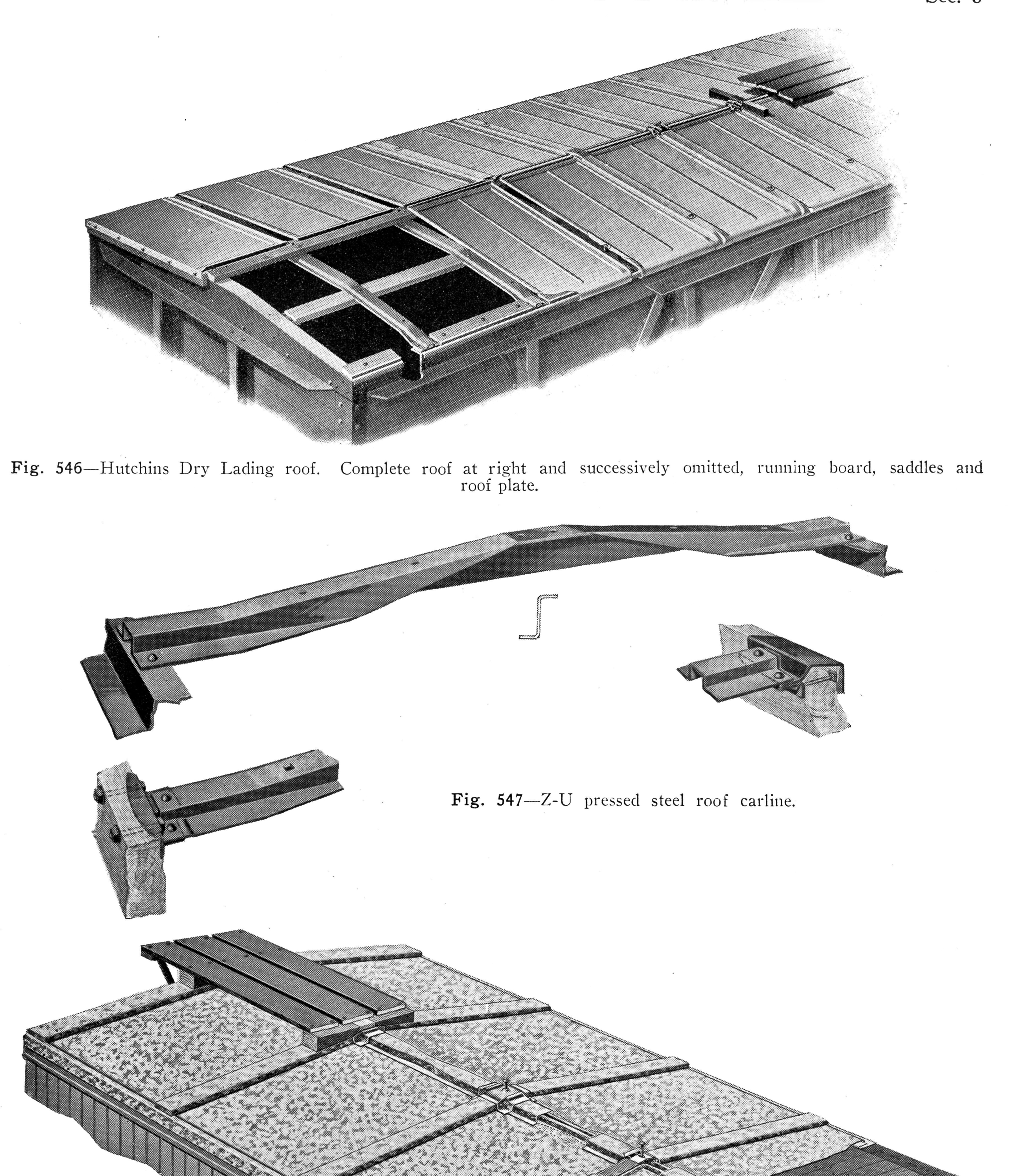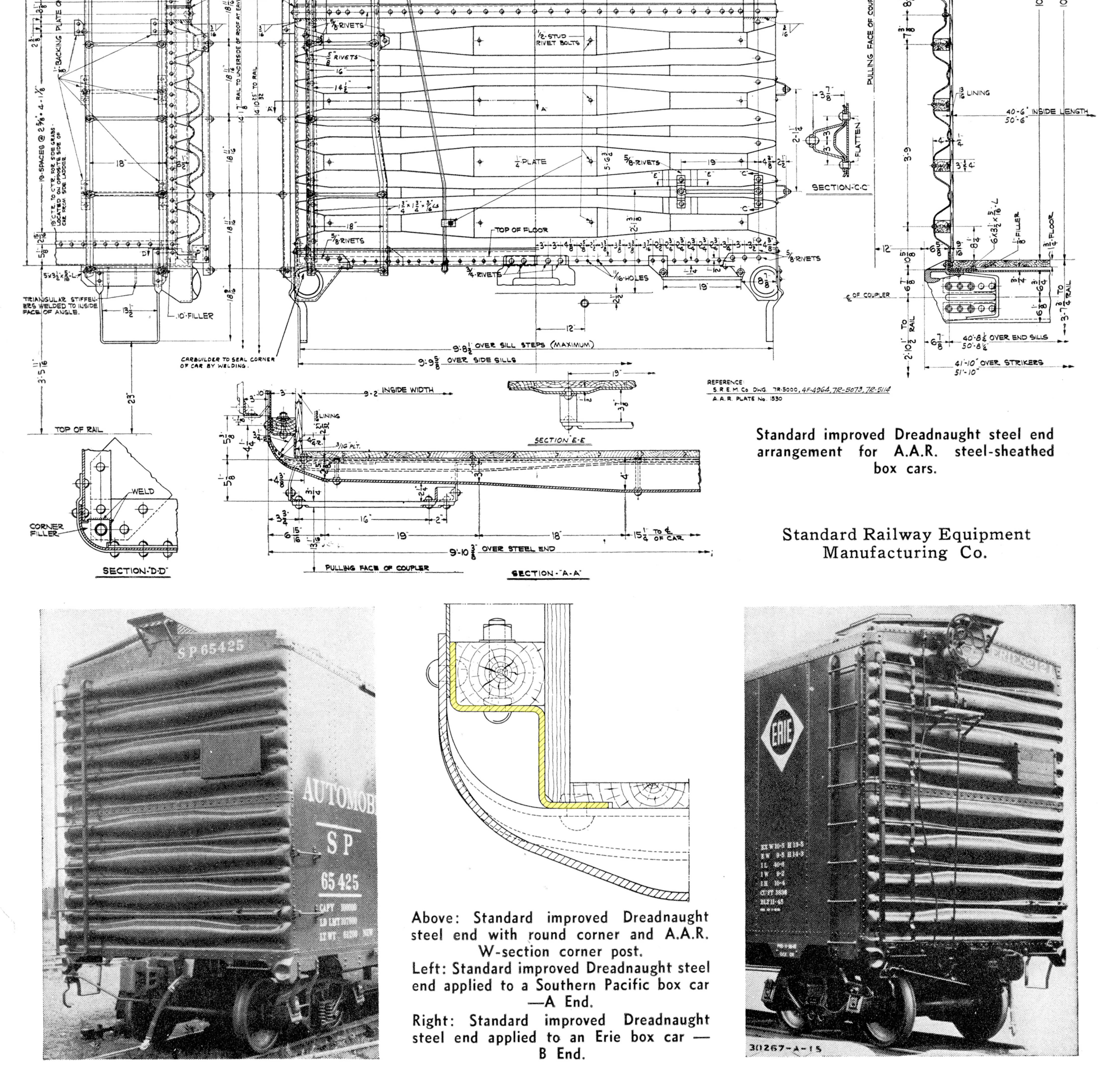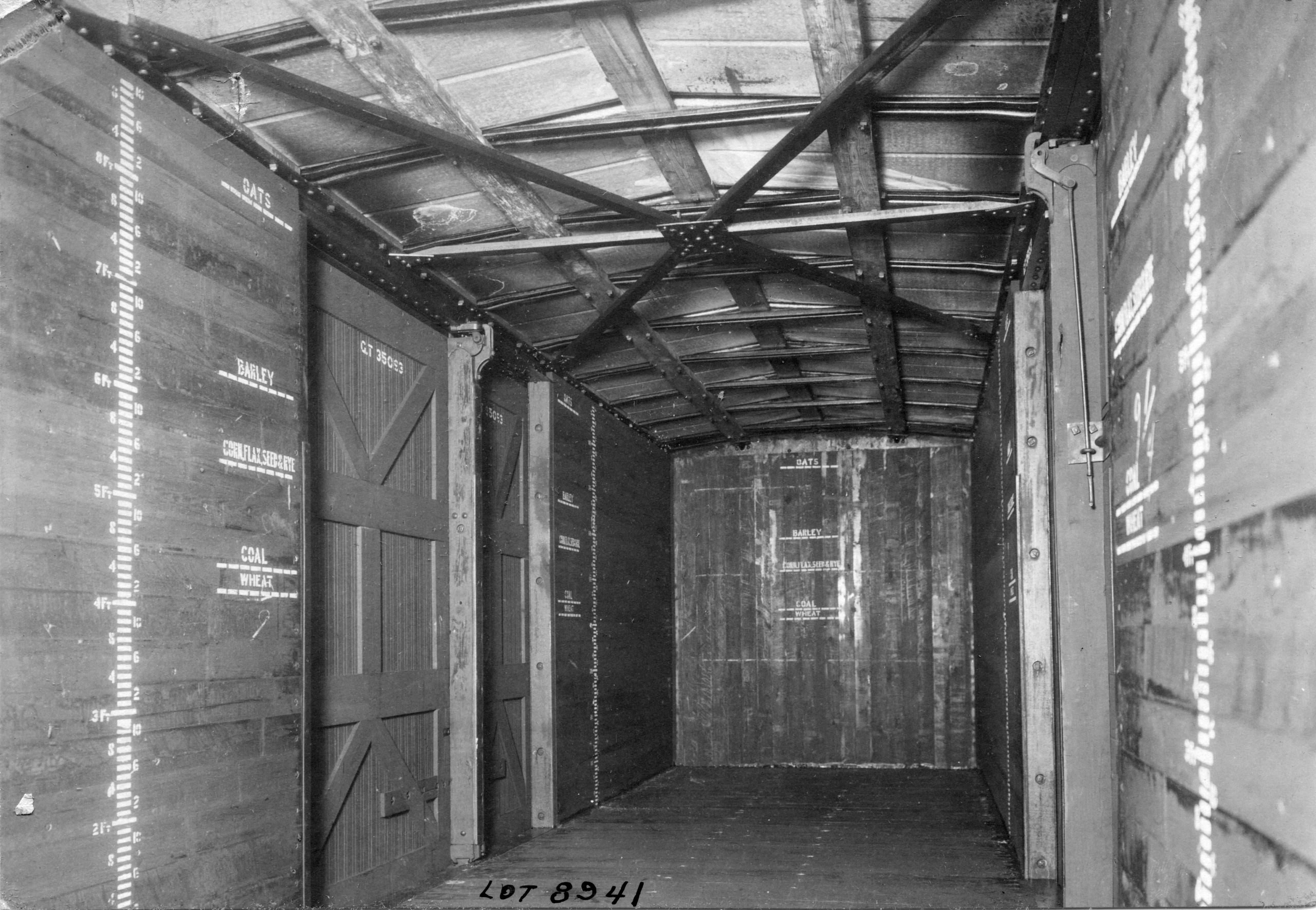I recently read about SOUTHERN PACIFIC rebuilding some USRA single sheathed boxcars into steel sided boxcars.
They used something called a “CarLine End” on these rebuilds.
I have not been able to find an image of these.
Is this a stamped steel car end style, like Murphy, or is it another name for opening doors on the end of the car for automobile loading?
Or… is it something else entirely?
Thanks.
-Kevin
https://patents.google.com/patent/US1161498
It would appear to be a “detail part”, but in truth I’m not sure I’m much the wiser!
Cheers, the Bear. [:)]
A quick search yielded this (and it’s probably not necessary to read the whole thing):
Be it known that I, GEORGE B. MALTBY, of Cleveland, in the county of Cuyahoga and State of Ohio, have invented a certain new and useful Improvement in Roof-Carlines, of which improvement the following is a specification.
My invention relates to sheet or plate metal roof-carlines of the general type which is exemplified in Letters Patent of the United States No. 649,171, granted and issued to me and to Broderick Haskell (as assignee of twothirds of the right) under date of May 8, 1900, and in Letters Patent of the United States No. 7 42,465, granted and issued to the Cleveland Car Specialty Company (as my assignee) under date of October 27, 1903. The object of my present invention is to provide a roof-carline which shall embody theadvantageous features of those set forth in Letters Patent Nos. 649,171 and 742,465, aforesaid, and which shall afford further improved facilities for attachment to a car-frame side plate and for the reception of a wood filler, if desired.
The improvement claimed is hereinafter fully set forth.
In the accompanying drawings, Figure 1 is a side view in elevation of slightly more than one-half in length of a roof-carline embodying my invention; Fig. 2, a plan or top view of the same portion thereof; Figs. 3 and 4, transverse sections on the lines a a and b b, respectively, of Fig. 1; Fig. 5, an end view in elevation; Fig. 6, a side view in elevation of slightly more than one-half in length of a roof-carline, illustrating a modification of structural detail; Fig. 7, a plan or top view of the same portion thereof; Figs. 8 and 9, transverse sections on the lines 0 c and (Z (Z, respectively, of Fig. 6; Fig. 10, an end viewv in elevation, and Fig. 11 a plan view of one of the end portions of a carline h
Carlines are the ribs that run from one side of a car to the other to support the roof. Carline Ends seem to be the piece used to attach the ribs to the car side. They would probably not be visible on the exterior of the car.
Mark
Thanks for that.
It makes sense that they would not be mentioned as a detail on a model then.
I still can’t tell a “W” corner post from a square style either. I have kits that specify they are one of the other, but they look the same to me.
-Kevin
One is more rounded than the other.
With the “W” corner post, there is basically a “notch” at the corner of the car that allows the corner of the end stamping to curve through the corner.
With the “sqaure” post, well, the corner of the end has to be square.
 Carline_1953 by Edmund, on Flickr
Carline_1953 by Edmund, on Flickr
 Carline_1940 by Edmund, on Flickr
Carline_1940 by Edmund, on Flickr
Sometimes the AAR “W” corner post is there but likes to hide —
 Corner_Post by Edmund, on Flickr
Corner_Post by Edmund, on Flickr
Regards, Ed
Thanks Ed.
It sounds like the differences between a CarLine End and other types are internal and not on a model. That helps a lot.
In the bottom images it looks like the “W” corner is shown in yellow. This also looks like an internal detail.
As Chris stated, the end might be more curved, but I sure can’t tell in 1/87 scale from 6 inches away.
[(-D]
-Kevin
Yes, I highlited the W-section detail.
There were many earlier house car designs that incorporated various methods of joining the sides to the ends. The wrap-around “Dreadnaught” design seems to have been favored for many years. Later designs used a “non-terminating” corrugated end.
 ACF 1970s091 by John W. Barriger III National Railroad Library, on Flickr
ACF 1970s091 by John W. Barriger III National Railroad Library, on Flickr
Dozens of carbuilders and many railroads had their own idea as to what was a “good design” and the ARA and later AAR got into testing and standardizing freight car designs.
 3500006 by John W. Barriger III National Railroad Library, on Flickr
3500006 by John W. Barriger III National Railroad Library, on Flickr
One advantage to pressed steel roof panels is that the “car lines” were eliminated and construction costs reduced.
 8941 001 by John W. Barriger III National Railroad Library, on Flickr
8941 001 by John W. Barriger III National Railroad Library, on Flickr
Lots of pesky parts eliminated:
 ACF Lot 6195 005 by John W. Barriger III National Railroad Library, on Flickr
ACF Lot 6195 005 by John W. Barriger III National Railroad Library, on Flickr
[url=https://flic.kr/p/29BGfdo][img]https:/






